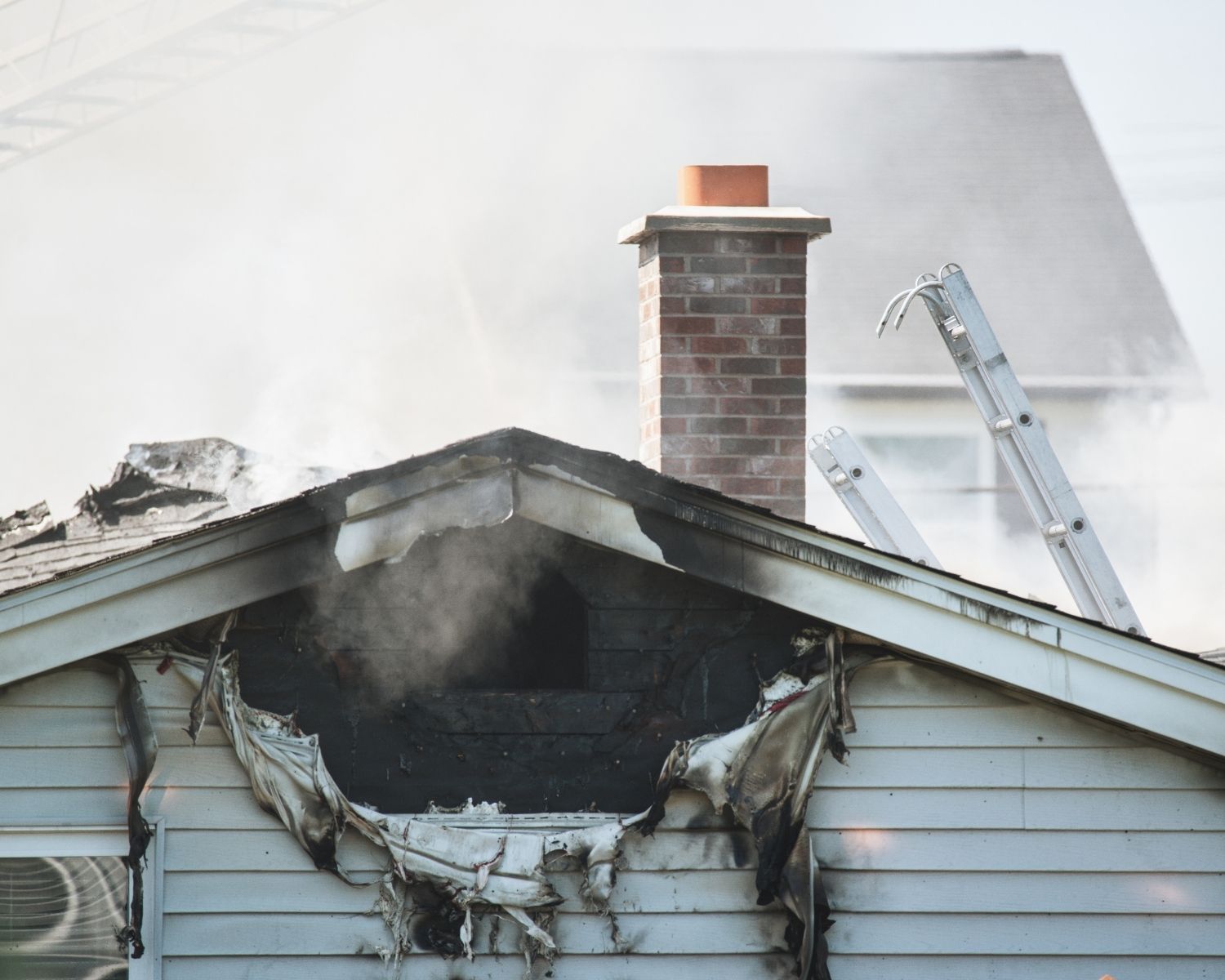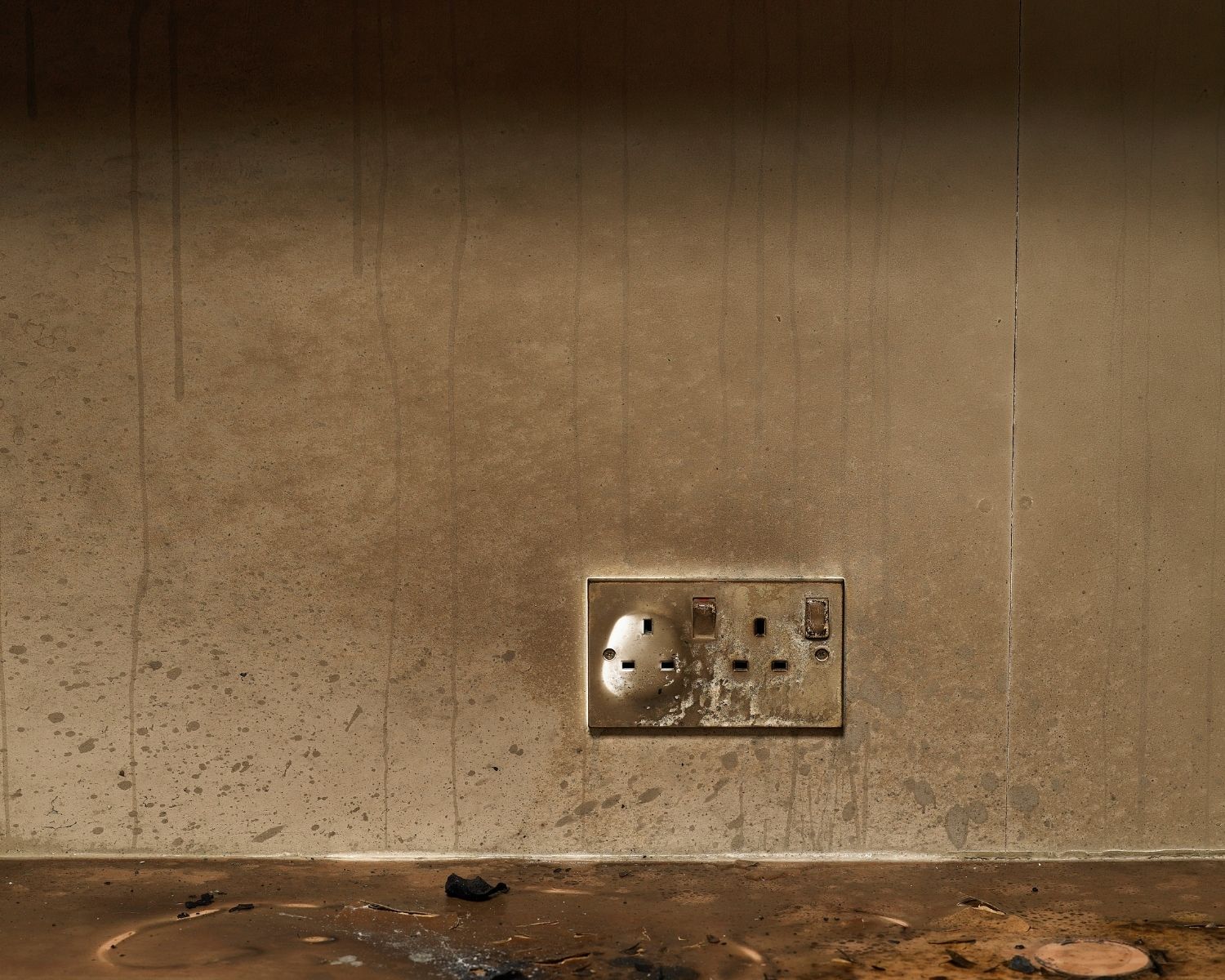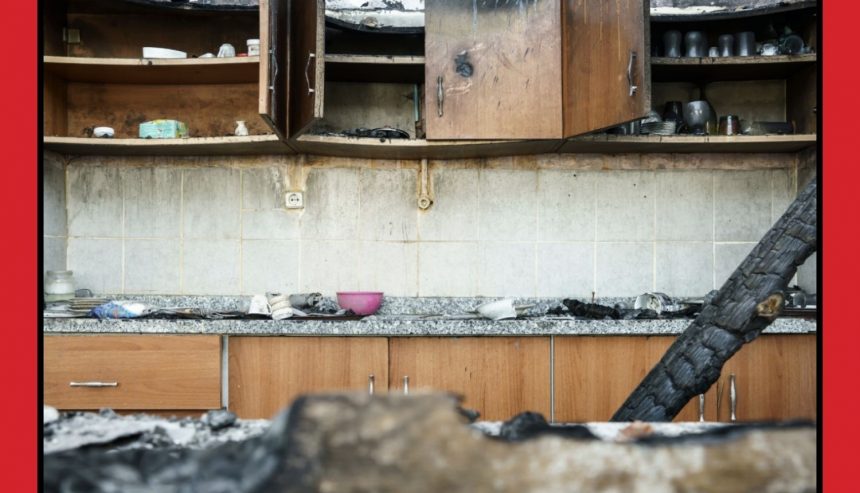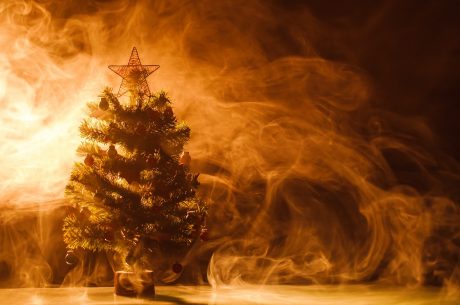Quick Navigation
- → Understanding the Three Types of Fire Damage
- → How to Safely Assess Fire Damage
- → Evaluating Smoke and Soot Damage
- → Structural Damage Assessment
- → Room-by-Room Inspection Checklist
- → Understanding Different Soot Types
- → When to Call Professionals
- → Documenting for Insurance Claims
- → Fire Damage Health Risks
- → Restoration Timeline
- → Local Resources
- → Frequently Asked Questions
The smoke alarm has finally stopped. The firefighters have packed up and left. You’re standing in your driveway, looking at your home, and wondering what comes next. If you’ve experienced a house fire in the Greater Eastside area, that mix of relief and overwhelming uncertainty is completely normal. At PuroClean of Redmond/Woodinville, we’ve helped hundreds of families through this exact moment, and we know the first question is always the same: “How bad is it, really?” Understanding fire and smoke damage restoration starts with knowing what you’re looking at, and that’s exactly what we’ll walk through together.
Understanding the Three Types of Fire Damage in Your Home
House fires don’t just damage what they burn. Think of fire damage like a really unwelcome house guest who brings two equally destructive friends: smoke and water (from firefighting efforts). Each type of damage requires its own assessment approach, and missing one can lead to bigger problems down the road.
Primary Fire Damage: The Direct Impact
Primary fire damage is what most people picture: the charred, burned areas where flames actually touched. This includes everything from slightly singed surfaces to completely destroyed structural elements. In Washington homes, with our abundance of wood-frame construction, this damage can spread quickly through wall cavities and attic spaces.
Smoke Damage: The Invisible Threat
Here’s something that surprises many Redmond homeowners: smoke damage often extends far beyond where the fire actually burned. Smoke is sneaky. It travels through your HVAC system, seeps into porous materials, and can affect rooms that never saw a single flame. That distinctive smell? It’s not just unpleasant, it’s actually tiny particles embedded in your walls, furniture, and belongings.
Water Damage from Firefighting Efforts
The firefighters who saved your home also, ironically, created another challenge. The water used to extinguish flames doesn’t just evaporate. It soaks into floors, runs down walls, and pools in unexpected places. In our rainy Pacific Northwest climate, this additional moisture needs immediate attention to prevent mold growth, something we see all too often when water damage isn’t properly addressed. This is similar to what happens during burst pipe emergencies, where quick action makes all the difference.
How to Safely Assess Fire Damage in Your Washington Home
Before we dive into what to look for, let’s be crystal clear about safety. Your home has been through trauma, and some damage might not be visible. Never enter a fire-damaged home until local authorities or fire officials give you the green light. Seriously, that Instagram photo isn’t worth the risk.
Getting Permission to Enter
In King and Snohomish Counties, the fire department will typically do an initial safety assessment. They’re checking for structural stability, gas leaks, and electrical hazards. Once they give you permission to enter, you can begin your assessment. But remember, “safe to enter” doesn’t mean “safe to live in” or “safe to start cleaning.”
Essential Safety Gear for Initial Assessment
Before stepping inside, gear up properly:
- N95 mask or respirator (smoke particles are no joke)
- Heavy-duty gloves
- Protective eyewear
- Closed-toe shoes with thick soles
- Long pants and sleeves
- Flashlight (power might be off)
- Camera or phone for documentation
Evaluating Smoke and Soot Damage Throughout Your Property
Smoke damage assessment requires detective work. It’s not always obvious, especially in rooms away from the fire’s origin. We’ve seen Woodinville homes where the fire was contained to the kitchen, but smoke damage reached every bedroom upstairs.

Smoke damage can travel far from the fire’s origin, affecting areas like roof structures and attics that weren’t directly exposed to flames.
Visual Signs of Smoke Damage
Start by looking for these telltale signs:
- Discoloration on walls and ceilings (often yellowish or black)
- Soot deposits around vents and light fixtures
- Darkened areas where pictures or furniture blocked the wall
- Discolored grout lines in bathrooms and kitchens
- Black film on windows and mirrors
Need Professional Fire Damage Assessment?
Our IICRC-certified team provides free assessments and works directly with your insurance company.
Get Your Free AssessmentThe Smell Test: What Your Nose Tells You
Your nose is actually a pretty sophisticated smoke damage detector. Different materials produce different odors when burned:
- Protein fires (kitchen fires) leave a particularly pungent smell
- Wood fires create that campfire smell, but stronger and more acrid
- Synthetic materials produce chemical odors that can be overwhelming
- Electrical fires have a distinct metallic or plastic smell
If you can smell smoke in a room, there’s damage there, even if you can’t see it. Trust your nose on this one.
Hidden Smoke Damage Locations
Smoke loves to hide. Check these often-missed spots:
- Inside closets and cabinets
- Behind switch plates and outlet covers
- Inside HVAC ducts and returns
- Attic and crawl spaces
- Inside appliances (yes, even closed ones)
- Behind and under furniture
Structural Damage Assessment: What’s Safe and What’s Not
This is where things get serious. Structural damage isn’t always dramatic and obvious. Sometimes it’s subtle, and that’s what makes it dangerous.
Checking Load-Bearing Elements
In typical Pacific Northwest homes, load-bearing elements include:
- Foundation walls
- Central beams in basements or crawl spaces
- Certain interior walls (usually running perpendicular to floor joists)
- Support posts and columns
Look for charring, warping, or any signs of compromise. Even minor damage to these elements requires professional evaluation. This isn’t DIY territory.
Ceiling and Roof Integrity
Fire travels up, which means your ceiling and roof often take a beating. Check for:
- Sagging or bowing ceiling areas
- Visible light coming through the roof
- Damaged or missing roofing materials
- Compromised trusses or rafters
- Water stains indicating firefighting water penetration
With our frequent rain in the Greater Eastside, any roof damage needs immediate attention. Even small openings can lead to significant water damage from heavy rains.
Floor System Evaluation
Floors might seem solid but could be hiding damage. Test carefully:
- Walk slowly, feeling for soft spots or unusual give
- Look for warping or buckling
- Check where floors meet walls for gaps
- Examine exposed joists from below if accessible
- Note any areas where firefighting water has pooled
Room-by-Room Fire Damage Inspection Checklist
Let’s get practical with a systematic approach to checking each area of your home. This checklist helps ensure you don’t miss anything important when documenting damage for insurance purposes.
Room-by-Room Inspection Checklist
Kitchen Fire Damage Assessment

Always test electrical outlets and switches with the power off to ensure safety during your fire damage assessment.
Living Areas and Bedrooms
Bathroom Inspection Points
Basement and Attic Areas
Understanding Different Soot Types and Their Cleanup Requirements
Not all soot is created equal. The type of soot in your home depends on what burned and how hot the fire got. Understanding this helps set realistic expectations for cleanup.
| Soot Type | Characteristics | Source | Cleanup Difficulty |
|---|---|---|---|
| Dry Soot | Powdery, doesn’t smear easily | High-temp fires, natural materials | Moderate |
| Wet Soot | Sticky, smears when wiped | Low-temp fires, plastics, rubber | Difficult |
| Protein Residue | Nearly invisible, extremely pungent | Kitchen fires, burnt food | Very Difficult |
| Fuel Oil Soot | Thick, sticky residue | Heating system fires | Extremely Difficult |
Dry Soot from High-Temperature Fires
Fast-burning, high-temperature fires typically leave dry soot. This is actually the “best” kind to deal with (if there’s such a thing). It’s powdery, doesn’t smear easily, and responds well to dry cleaning methods. Common with natural material fires.
Wet Soot from Low-Temperature Fires
Slow-burning, low-temperature fires create wet, sticky soot. This stuff is a nightmare, honestly. It smears when you try to wipe it, has a strong odor, and often requires professional cleaning. Commonly results from plastic and rubber burning.
Protein Residue from Kitchen Fires
Kitchen fires leave nearly invisible residue that’s incredibly pungent and sticky. You might not see much damage, but the smell will knock you over. This type requires specialized cleaning techniques and often enzyme treatments.
Fuel Oil Soot from Heating System Fires
Less common in our area but still possible, especially in older homes. This creates a thick, sticky residue that’s extremely difficult to clean and often requires complete replacement of affected materials.
When to Call Fire Damage Restoration Professionals
Look, we get it. After a fire, you want to jump in and start fixing things. It’s human nature. But some situations absolutely require professional help, not just for the quality of restoration but for your safety and your insurance claim.
Structural Damage Red Flags
Call professionals immediately if you notice:
- Any damage to load-bearing walls or beams
- Ceiling sagging or visible structural compromise
- Foundation cracks or movement
- Roof damage allowing weather exposure
- Electrical system damage or concerns
Health and Safety Concerns
Professional restoration becomes essential when:
- Smoke odor persists after initial cleaning attempts
- Soot covers large areas or HVAC systems
- Water from firefighting has been standing over 48 hours
- You or family members have respiratory issues
- Asbestos or lead paint might be present (common in pre-1980s homes)
Insurance Claim Considerations
Here’s something many homeowners don’t realize: improper DIY cleanup can actually hurt your insurance claim. Professional restoration services document everything, use industry-standard procedures, and can work directly with your insurance company. At PuroClean of Redmond/Woodinville, we handle these claims daily and know exactly what insurers need to see. Understanding what insurance typically covers can help you navigate the process more effectively.
Documenting Fire Damage for Insurance Claims
Insurance companies aren’t trying to be difficult (usually), but they do need thorough documentation. The more organized you are, the smoother your claim process will be.
Photography Best Practices
Take photos like you’re preparing for a court case:
- Shoot wide angles showing overall room damage
- Capture close-ups of specific damage
- Include something for scale (ruler, coin, etc.)
- Take photos from multiple angles
- Document serial numbers on damaged electronics
- Photograph every affected item, even if it seems minor
Creating Detailed Inventory Lists
Make a spreadsheet with:
- Item description
- Purchase date (approximate is fine)
- Original cost
- Replacement cost
- Condition before fire
- Current condition
- Photo reference numbers
Yes, it’s tedious. Yes, it’s worth it. Trust us on this.
Working with Insurance Adjusters
When the adjuster visits:
- Walk through with them and point out all damage
- Share your documentation and inventory
- Ask questions about coverage and next steps
- Get everything in writing
- Don’t sign anything you don’t understand
- Consider having a restoration professional present
Fire Damage Health Risks for Washington Residents
The health impacts of fire damage can persist long after the flames are out. Our damp climate can actually make some of these risks worse, particularly when it comes to mold growth in water-damaged areas.
Respiratory Concerns from Smoke Exposure
Smoke particles are tiny, some smaller than 2.5 microns. They get deep into your lungs and can cause:
- Immediate irritation and coughing
- Aggravation of asthma and allergies
- Long-term respiratory issues if exposure continues
- Particular risk for children and elderly residents
Toxic Material Considerations
Modern homes contain materials that release toxins when burned:
- Plastics release various chemicals
- Treated wood can release arsenic compounds
- Insulation may contain formaldehyde
- Old homes might have asbestos or lead paint
This isn’t meant to scare you, but to emphasize why professional assessment matters. According to the Washington State Department of Health, proper protective equipment and cleaning methods are essential after any significant fire event.
Preventing Mold Growth After Firefighting
Water damage from firefighting efforts, combined with our naturally humid climate, creates perfect conditions for mold growth. You’ve got about 24-48 hours before mold starts developing. That’s why quick water extraction is crucial, even while dealing with fire damage. If you notice any unusual odors or discoloration in the days following, check out what to do first after discovering mold for immediate action steps.
The Fire Damage Restoration Timeline
Understanding the typical restoration timeline helps set realistic expectations and plan your temporary living situation.
Fire Damage Restoration Timeline
Emergency Response (0-48 hours)
- Safety assessment and property securing
- Emergency board-up if needed
- Water extraction from firefighting
- Initial smoke and soot removal
- Documentation begins
Planning Phase (Days 2-7)
- Detailed damage assessment
- Restoration plan development
- Insurance claim filed
- Temporary utilities arranged
- Contents pack-out
Active Restoration (Weeks 2-8)
- Structural repairs
- Deep cleaning of salvageable materials
- Smoke odor elimination
- Content restoration
- Final inspections
Timeline varies based on damage severity. Kitchen fires may resolve in weeks, whole-house fires can take months.
Emergency Response Phase (0-48 hours)
The first two days are critical:
- Safety assessment and securing the property
- Emergency board-up if needed
- Water extraction from firefighting efforts
- Initial smoke and soot removal to prevent permanent staining
- Inventory and documentation begins
Restoration Planning Phase (Days 2-7)
During the first week:
- Detailed damage assessment completed
- Restoration plan developed
- Insurance claim filed and adjuster visit scheduled
- Temporary utilities arranged if needed
- Contents packed out for cleaning or disposal
Active Restoration Phase (Weeks 2-8)
The bulk of restoration work:
- Structural repairs and rebuilding
- Deep cleaning of salvageable materials
- Smoke odor elimination treatments
- Content cleaning and restoration
- Final inspections and quality checks
Every fire is unique, so timelines vary. A kitchen fire might be resolved in weeks, while whole-house fires can take months.
Local Resources for King County Fire Damage Recovery
You’re not alone in this recovery process. The Greater Eastside community has resources to help:
Emergency Services and Support
- American Red Cross of Northwest Region: Provides immediate emergency assistance including temporary shelter, food, and clothing
- King County Emergency Management: Offers disaster recovery resources and guidance
- Snohomish County Emergency Management: Similar services for our northern service area residents
Mental Health and Family Support
Fires are traumatic. It’s okay to need help processing this experience:
- Crisis Connections: 24/7 support line at 866-427-4747
- Local churches and community centers often provide counseling and support groups
- Your insurance may cover counseling related to the trauma
Temporary Housing Resources
While your home is being restored:
- Many insurance policies cover temporary housing (check your Additional Living Expenses coverage)
- Extended-stay hotels in Redmond and Woodinville offer monthly rates
- Local property management companies may have short-term rentals
Moving Forward After Fire Damage Assessment
Completing your fire damage assessment is just the beginning of your recovery journey. But now you’re armed with knowledge about what you’re facing, and that’s powerful. Remember, thousands of Washington families have walked this path before you and come out the other side with homes that are not just restored but often better than before.
At PuroClean of Redmond/Woodinville, we’ve spent nearly two decades helping our neighbors through these challenges. We understand that behind every fire damage claim is a family trying to get their life back to normal. That’s why we approach every job with both professional expertise and genuine compassion. Our Redmond restoration services are available 24/7 for emergencies just like yours.
If you’re facing fire damage in your home, you don’t have to navigate this alone. Our IICRC-certified team is available 24/7 for emergency response throughout the Greater Eastside area. We’ll help you understand your damage, work directly with your insurance company, and get you back to normal life as quickly as possible.
Ready to take the next step in your fire damage recovery? Contact our team for a free assessment. We’re here to help you move from damage assessment to full restoration, one step at a time.
Frequently Asked Questions About Fire Damage Assessment
How soon after a fire should I have my home professionally assessed?
Professional assessment should happen as soon as the fire department clears your home for entry, ideally within 24-48 hours. Quick assessment is crucial because smoke and soot continue causing damage even after the fire is out. The acidic nature of soot can permanently stain surfaces within days, and standing water from firefighting efforts can start developing mold within 48 hours, especially in our humid Pacific Northwest climate.
Can I stay in my home if only one room was damaged by fire?
Even if fire damage seems limited to one room, smoke and soot often travel throughout your home’s HVAC system, affecting air quality in every room. Additionally, water from firefighting efforts may have spread to adjacent areas, creating hidden damage. Most insurance policies cover temporary housing during restoration, and it’s usually safer and healthier to relocate temporarily while professionals address all damage, including invisible smoke particles and odors that can cause respiratory issues.
What’s the difference between smoke damage and soot damage in terms of cleanup?
Smoke damage refers to the odor and invisible particles that penetrate porous materials like fabrics, carpets, and drywall, requiring specialized deodorization treatments and sometimes ozone or thermal fogging. Soot damage involves the visible black residue that settles on surfaces, which needs careful removal using specific techniques based on soot type, dry soot can be vacuumed with HEPA filters, while wet, sticky soot requires chemical sponges and professional cleaning solutions to avoid smearing and permanent staining.
Will my homeowner’s insurance cover all types of fire damage to my property?
Most standard homeowner’s insurance policies in Washington cover fire damage, including the fire itself, smoke damage, and water damage from firefighting efforts, but coverage varies by policy and company. Your policy typically includes dwelling coverage for structural damage, personal property coverage for belongings, and additional living expenses for temporary housing, though certain limits and deductibles apply. Always document everything thoroughly and consider having a restoration professional present during the insurance adjuster’s visit to ensure all damage, including hidden smoke and water damage, is properly identified and included in your claim.



